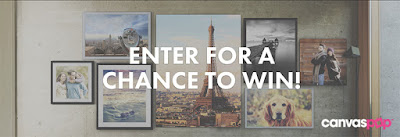 A large box has arrived with a pink sticker in a shape of a
heart saying “Made with Love” and indeed it was. Being carefully packed in
multiple layers of cardboard and three layers of bubble wrap a framed print has
finally immerged. Quality and attention to detail is striking. The print was
carefully placed under the glass in a thin black wooden frame, ready to be hung
on the wall by a solid metal string with two little buttons attached to the inside
of the lower part of the fame to prevent it from touching the wall. The glass
had one more plastic protection layer and the label on the back of it had the
name of the quality controller.
A large box has arrived with a pink sticker in a shape of a
heart saying “Made with Love” and indeed it was. Being carefully packed in
multiple layers of cardboard and three layers of bubble wrap a framed print has
finally immerged. Quality and attention to detail is striking. The print was
carefully placed under the glass in a thin black wooden frame, ready to be hung
on the wall by a solid metal string with two little buttons attached to the inside
of the lower part of the fame to prevent it from touching the wall. The glass
had one more plastic protection layer and the label on the back of it had the
name of the quality controller.
One word
comes to mind – perfection.
I am not
surprised as since 2009 CanvasPop has been absolutely obsessed with providing
its clients with quality prints framed or on canvas.
This fast paced business has already acquired more than a
hundred thousand lucky customers who enjoyed their prints. As an artist I can only say that any painting
or photograph put in a frame looks
somehow different, a frame serves as a “window” into another world of the image,
which gives you a feel that you are there, inside, being part of this
world…
Oh yes, another word can characterise this company –
Generosity!
I guess the popularity of CanvasPop is also due to the fact
that, in spite of high quality products they have always been generous,
offering discounts up to 30% to new customers, running contests, giving and sharing , spreading their love
across the globe.

They are always ready to go that “extra mile” providing their
customers with a team of talented photo experts who would bring uploaded
photographs to perfection, adjusting colours and contrast, if necessary
removing red-eye and so on and all this at no extra cost.
Their solid guarantee
of the quality includes reprinting your photograph should you feel not 100
percent satisfied or otherwise you would have their 100% Love Guaranteed.
Their Personal Designer is always there to make your special picture perfect.
This Tall Ship print, framed by CanvasPop, is now proudly decorates
the wall in my living room above the fireplace. They can share their love with you, too! With
a click of a button you can upload your favourite picture and participate in
their new Contest to get a chance to win a free print from this amazing
company.











